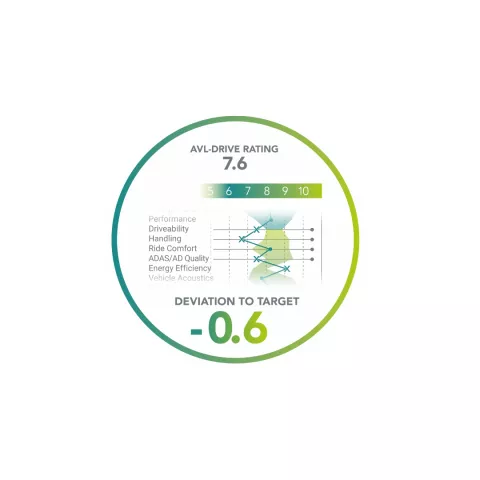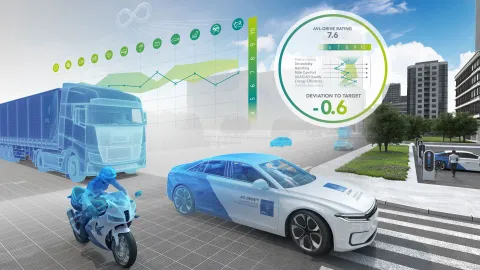A wealth of statutory and internal requirements must be met in the development process. Manufacturers and end customers both have very specific ideas concerning the handling characteristics that define the character of a vehicle model or the DNA of a brand.
The problem with this is that human ideas are always subjective. The tester can be influenced by external factors such as their mood or state of health. This makes it virtually impossible to make reliable statements using conventional methods – particularly for tests in a virtual environment.
With AVL-DRIVE™ we have made use of studies with various subject groups to derive algorithms that describe human feelings based on physical parameters. For objective, people-centered vehicle evaluation and verification in real time in any development environment – from target setting to quality control and final acceptance. We make it possible to measure and evaluate subjective feelings.

The measuring system records various sensor and CAN bus signals, such as longitudinal acceleration, engine speed, vehicle speed, pedal settings, and vibrations. The DMU (drive main unit) forwards this input to the AVL-DRIVE™ software for further processing.
More than 200 different driving modes for driveability, driving comfort, handling, and ADAS are recognized automatically, and more than 450 criteria are evaluated objectively in real time. Several overlapping maneuvers can be detected and evaluated simultaneously in the process.
An insight-driven data analysis is accelerated by graphical representation of the test results. The automatic generation of reports and the automatic creation of benchmark libraries enable test results to be communicated quickly.
Based on a benchmark analysis, quality targets are defined for vehicle attributes. These are used as a reference for evaluating the vehicle attributes throughout the development process.
Frontloading the development of handling characteristics not only reduces the number of vehicle tests required, but also reduces costs. Having parallel development as an option in early phases also improves the quality.
A closed optimization process incorporating AVL-DRIVE™, AVL VSM™, AVL PUMA Open™, and AVL CAMEO™ ensures new efficiency – in vehicle development and simulation, as well as on engine and/or propulsion system testbeds.
Using AVL-DRIVE™ comes with many benefits.
Reduced Effort and Costs
- Saving of development loops
- Reduction of time and costs through frontloading
- Faster, more precise realization of the end user’s comfort and safety expectations
Improved Communication
- Optimized alignment between teams of experts
- Unambiguous communication between engineering and management, as well as between OEM and the supply industry
- Greater flexibility in vehicle development
Long-Term Comparability of Values
- Evaluations across all platforms/drive concepts – from the design phase to final acceptance, as well as during quality assurance control
- Establishment of a unique vehicle characteristic and DNA that is both market-specific and brand-specific
With AVL-DRIVE™ we take the intelligent development of road performance, comfort, handling, and advanced ADAS/AD functions to a new level – throughout the development process and beyond.
Evaluation in Real Time
When driving in the real-world environment, while still in the vehicle, the calibration expert is shown detailed information on the execution of the test, the discrepancies detected, and on which modifications may be necessary. This reduces development loops and saves both time and money.
Energy Management & Powertrain Strategy
The AVL-DRIVE™ VIORE add-on enables the objective assessment of the powertrain strategy based on drivability criteria and energy management KPIs. Thus, operation strategies become measurable and comparable. This permits to balance between powertrain efficiency and driving excitement without sacrifices.
Open Architecture
AVL-DRIVE™ provides interfaces for increasing flexibility. This allows you to integrate the software into your own digital infrastructure without any issues. The open system architecture also enables us to respond to your requests flexibly and modify the layout of the various parameters in line with your preferences.
Ready for Semi-Automated and Highly Automated Driving
In addition to the evaluations of the road performance triggered actively by the driver (AVL-DRIVE™ DRIVEABILITY), AVL-DRIVE™ AD plays a role in the development of semi-automated and highly automated driving. Maneuver detection and assessment lead to objective statements. Confidence in ADAS functions such as Adaptive Cruise Control (ACC) and Lane Keep Assist (LKA) is enjoying a sustained increase.

